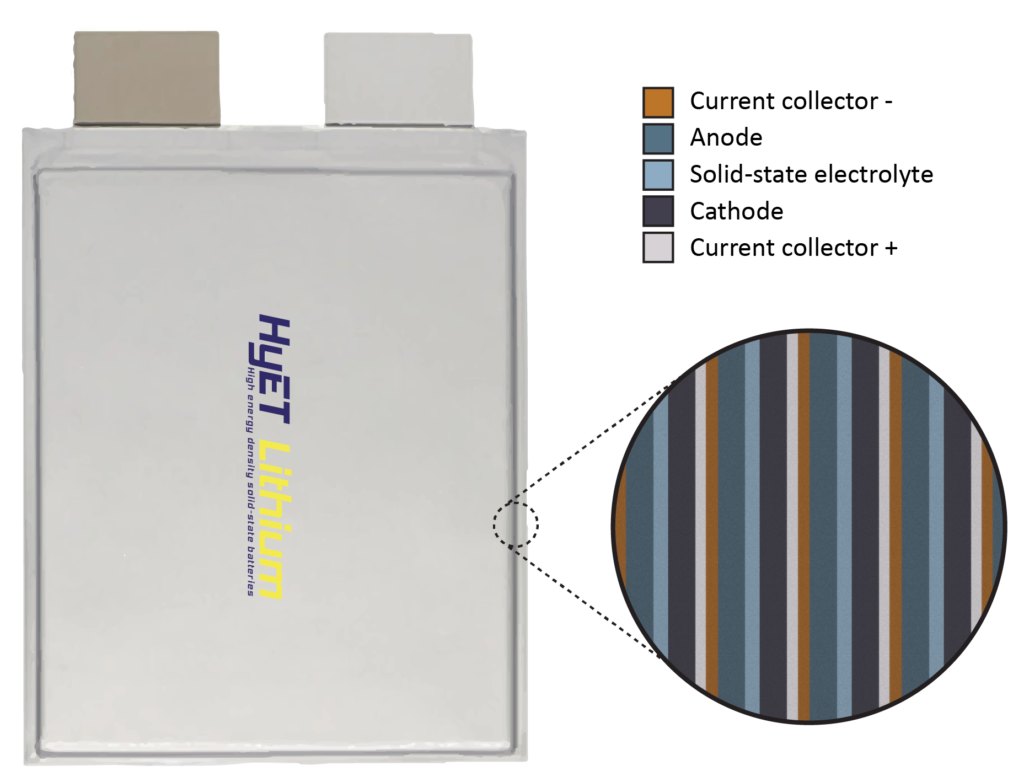Solid-state battery
HyET Lithium’s solid-state batteries consist of innovative materials produced by advanced production techniques. See roll-to-roll manufacturing to learn more about our manufacturing process.

Silicon anodes
Silicon is potentially the best replacement for the graphite anode material. The theoretical gravimetric capacity of Si is 4200 mAh g-1. The large difference in capacity between silicon and graphite arises because a silicon atom can bond with up to about four lithium ions (Li4.4Si) while it takes six carbon atoms to bond with only one lithium ion (LiC6). Si anodes display an appropriate average voltage of ca. 0.4 V vs Li+/Li. Moreover, it is abundant and non-toxic.
However, the implementation of silicon anodes has some challenges. Si can suffer from poor cyclability due to the large volume change (280% during full-capacity cycling at room temperature), leading to subsequent mechanical and chemical degradation. However, the problems arising from volume changes can be largely addressed by the synthesis of nano-porous Si.